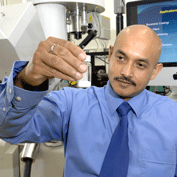Inject and Forget Contraceptive Drug Delivery Device

Problem being addressed[edit | edit source]
Women in developing nations often do not have access to contraceptives, and in the case that they do, may find it difficult to adhere to tedious guidelines on a regular basis. Essentially, there is a need for easy-to-use, cost-effective contraceptives that do not require regular maintenance or effort.
Detailed description of the solution[edit | edit source]
This innovative drug delivery system is a subcutaneous biosynthetic bone-like material made of calcium minerals that, once implanted, can deliver contraceptives at regular intervals in a sustained manner for several months.
Designed by[edit | edit source]
- Designed by: This device is currently being developed by Gérrard Poinern of Murdoch University in Australia.
- Manufacturer location: Murdoch University in Perth, Australia
When and where it was tested/implemented[edit | edit source]
A research group is currently developing the technology to be feasible, and if successful, will collaborate with a drug company to begin human trials.
Funding Source[edit | edit source]
This device received funding from the Grand Challenges Exploration Grant from the Bill & Melinda Gates Foundation.
References[edit | edit source]
Other internally generated reports[edit | edit source]
Murdoch receives $100,000 to develop a contraceptive for third world. (2010, November 10). Murdoch University. Retrieved February 5, 2013. Link available here.
Externally generated reports[edit | edit source]
Grand Challenges Explorations: Round 5 Winners Highlights. (n.d.). Bill & Melinda Gates Foundation. Retrieved February 5, 2013. Link available here.